The Weekender: 48 Hours in Guernsey
Where haute interiors are hoarded and honesty is the best policy
This post may contain affiliate links. Learn more
Pop over the channel to an island proud of its idiosyncrasies.
Blue post boxes, a disconcerting but nevertheless beautiful lack of overhead electricity pylons and car number plates with inverted colours: Governed independently and its own country, Guernsey has put its free reign to good use, making arbitrary aesthetic decisions, such as running all service lines underground and out of sight (just because they can), as well as ironing out some of the irritating inconveniences of life that run amuck in the UK.
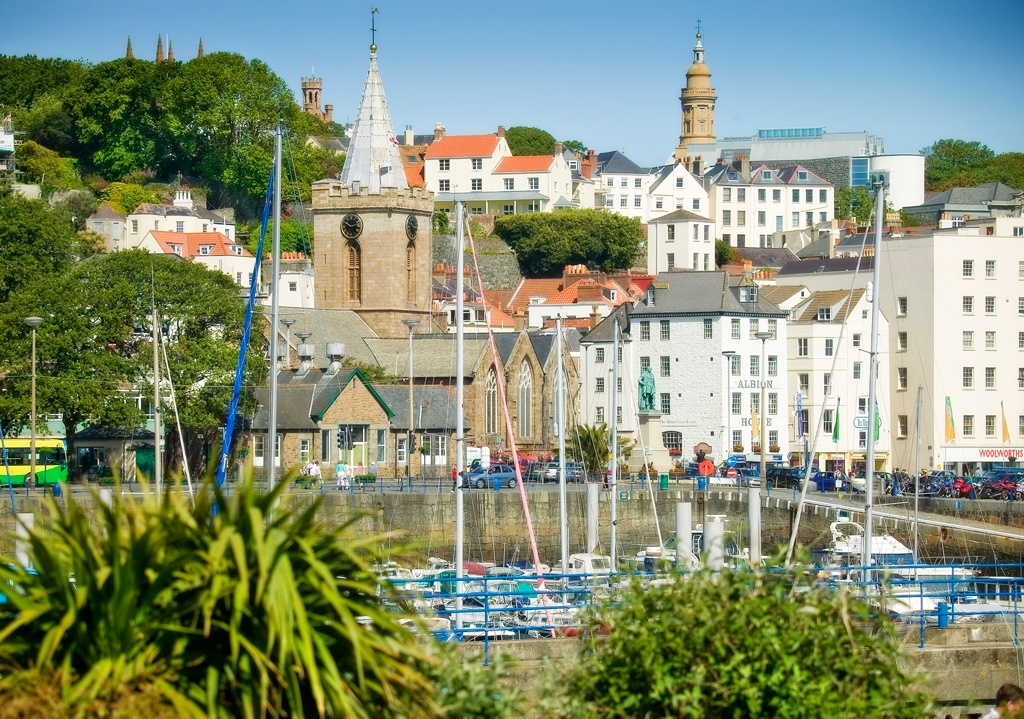
The seafront at St Peter Port
Parking spaces are bookended by a foot or two of extra room, absolving drivers from the terrible wingmirror-smashing nightmares suffered by the British. This is particularly generous considering that the narrow, winding rural-feel of the roads in the ‘capital’, St Peter Port, encourage most to have either Smart cars, Fiats or Minis. Plus, though the island is in general densely populated, the coastline remains relatively untouched – extensions on current cliffside homes are rarely permitted and few new properties are built. Guernsey haven’t taken their enchanting island for granted.
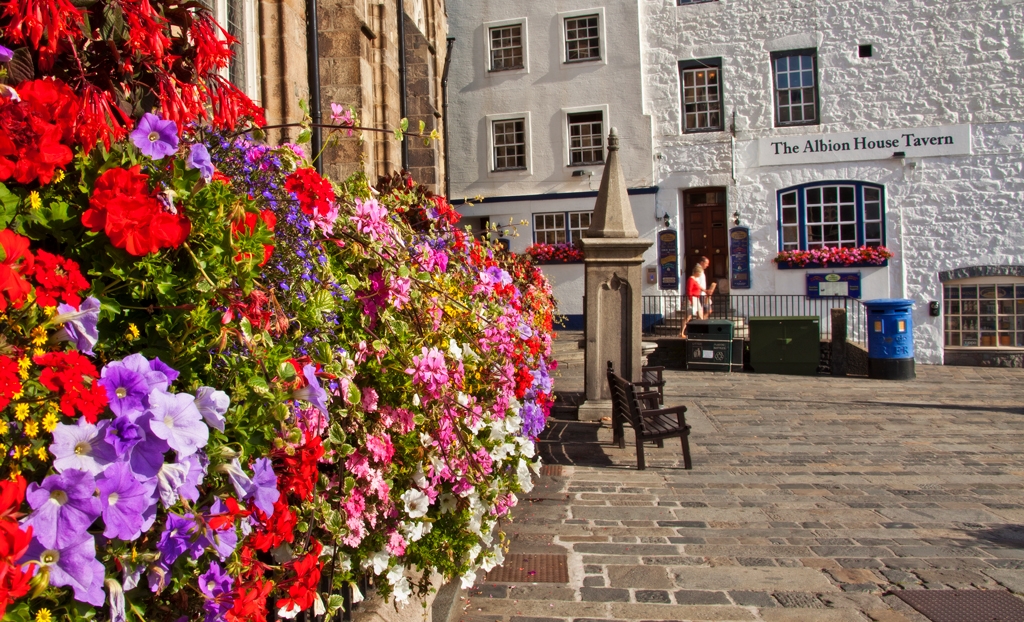
Spot the blue post box
Its unique quirks mean its allure is far-reaching. A mild microclimate nurtures a clematis nursery that is recognised as the leading one of its kind wordwide. The balmy weather also makes it a (slightly) safer bet for an (almost) staycation than Cornwall. In fact, The Guernsey Literary and Potato Peel Pie Society was filmed in north Devon, though arguably there are more cultural parallels to be drawn between the island and mainland France – language not being one of them. Historically islanders spoke Guernsey Norman French – sometimes simply referred to as ‘patois’ – though it is now very rare. The evacuation of a whole generation during the German occupation means that now plain English (with a Somerset-esque Guernsey twang) is most prolific.
More stereotypically French are the pick-your-own shellfish tanks in the restaurants. But island life wins out on the foodie front too – Guernsey have managed to stop almost every chain from setting up shop there. No Starbucks, no McDonald’s, no Pizza Express (who tried and failed): it’s a slice of pure, unspoilt culinary heaven. In reality, this means that when you eat out, you’ll always be served super-creamy Guernsey butter. Even more importantly, the whole island has been leading the farm-to-fork life since day one. The ‘hedge veg’ phenomenon is a case in point. Extremely commonplace, they are honesty-box-run, drive-through-style grocery stands, where surplus home produce is sold from garden hedgerows. This practice also makes the island a reliable refuge from which you can renew your trust in humanity.
So, visiting Guernsey isn’t like going back in time in every way – on several counts its steaming ahead of the rest of us. With a self-sufficient community, a common-sense government that ours could learn a thing or two from, and galleons of salty sea air, it’s no wonder Victor Hugo and Pierre-Auguste Renoir found creative inspiration on the island. Come looking for it here, and you won’t be disappointed.
Where to Stay in Guernsey
To get a real sense of the island, stay somewhere that’s perched slightly precariously on the side of a cliff. The steep zigzagging lanes are all part of life here and staying at Hotel de Havelet means you can enjoy sea views over the rooftops, and a leisurely walk downhill into St Peter Port (not St Peter’s, but no-one seemed to know why – another of the island’s mysterious ways!)
A more boutique option with its own gardens and spa, but about a 15-minute taxi from town is The Bella Luce Hotel. A Norman manor house, it has 23 rooms that have all been individually furnished with exquisite antique or bespoke pieces.
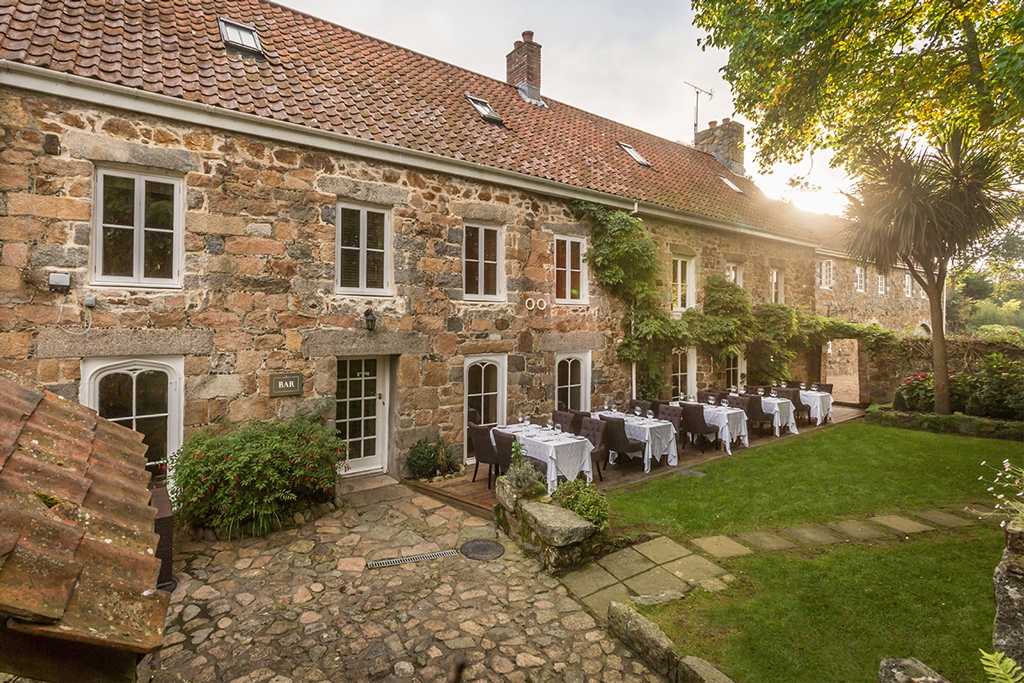
The Bella Luce Hotel in La Fosse © The Bella Luce Hotel
Where to Eat in Guernsey
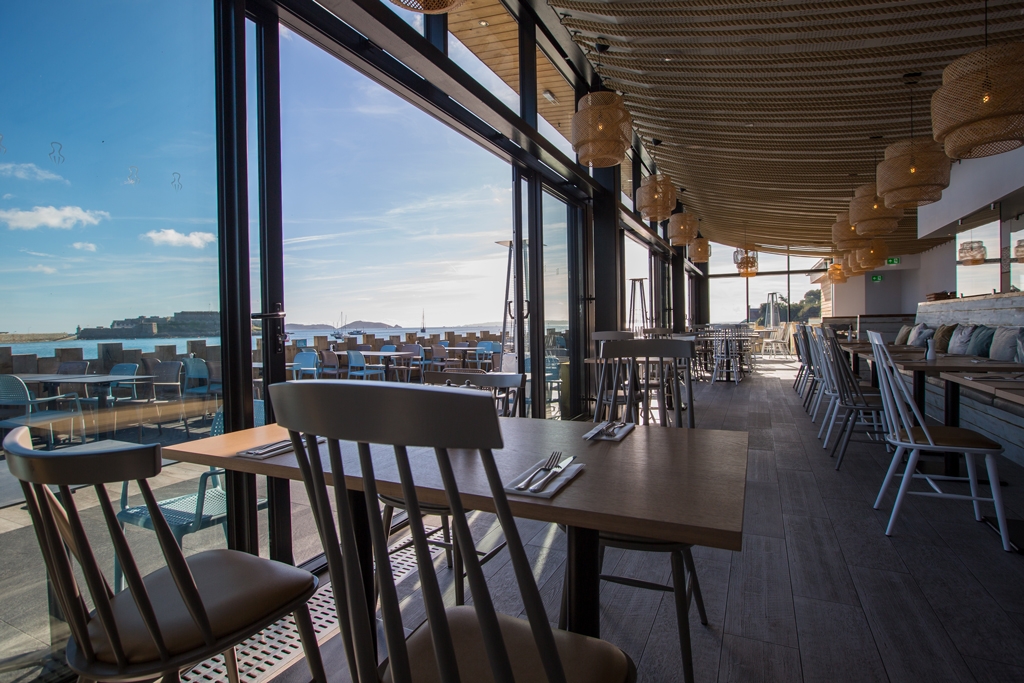
Enjoy the sea view at Octopus Bar and Restaurant
Jutting out of the southern side of Havelet Bay in St Peter Port with incredible views of Herm, Jethou and Sark (or magnificent spray displays in more dramatic weather) is Octopus Bar and Restaurant. With an extensive menu to fulfil any fresh seafood craving – simply cooked fish of the day, fried scallops beards, pickled octopus salad or a hearty seafood stew – you’ll quickly learn that Guernsey know how to do their seaside credentials real justice.

Surf and turf is all the rage at Octopus. Get the steamed sandwich buns or go all out with fillet steak and half a lobster
Moving inland, at The Bella Luce the brunch menu sings the praises of the island’s homegrown produce. The salmon salad was a juicy combination of peppery leaves and zesty lemon.
Or, for the best of both worlds, book the Copenhagen Bar and Grill, which is one of the Hotel de Hevelet’s twin on-site restaurants – another appealing string to its bow.

The Copenhagen Bar and Grill at Hotel de Havelet
What to See in Guernsey
Newly reopened after a €3.6 million investment to renovate the house and safeguard its lavish decor for many more generations to admire, Hauteville House is a must-see. The home of Victor Hugo for 15 years during his exile from France in 1855-70, he ostensibly spent every moment either eccentrically decorating it or writing Les Misérables. It offers an intensive insight into the mind of this literary genius, who also quite obviously had an eye for interiors too. His inspiration seems to have come from all corners of his contemporary world, pouncing on oriental, gothic, sublime, grotesque and renaissance trends.
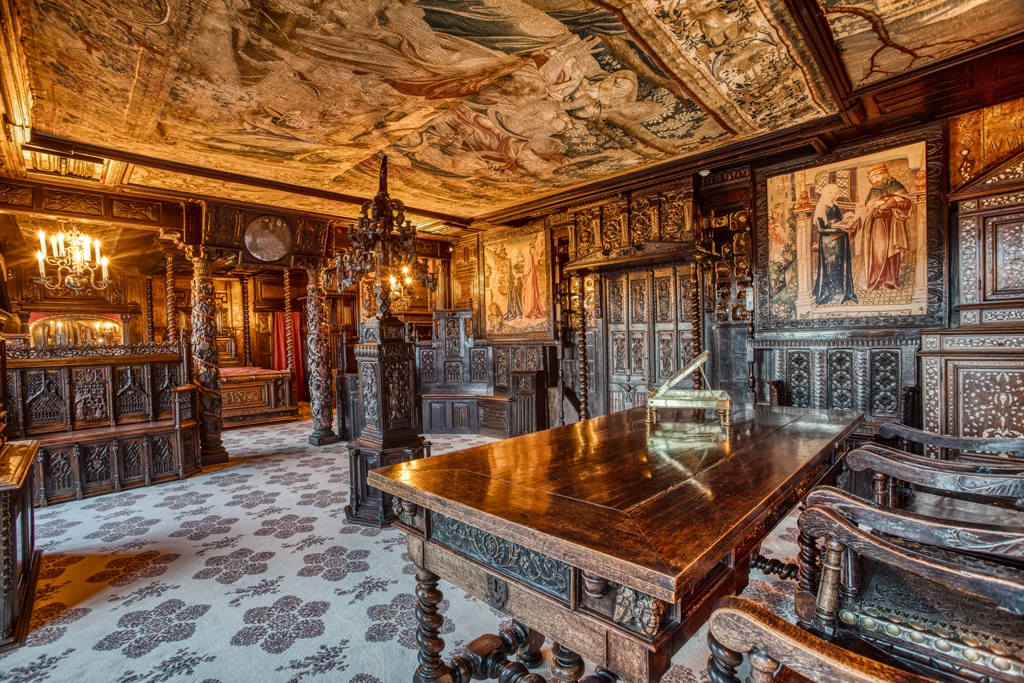
The ‘oak gallery’ in Hauteville House
Commissioning some of his furniture to be made by a team of local craftsmen including Peter and Jean Mauger and Tom Gore, and collecting the rest from various auctions and antique shops, Hugo did not buy expensive things for the sake of it. He chose according to what would add most beauty and meaning to his masterpiece.
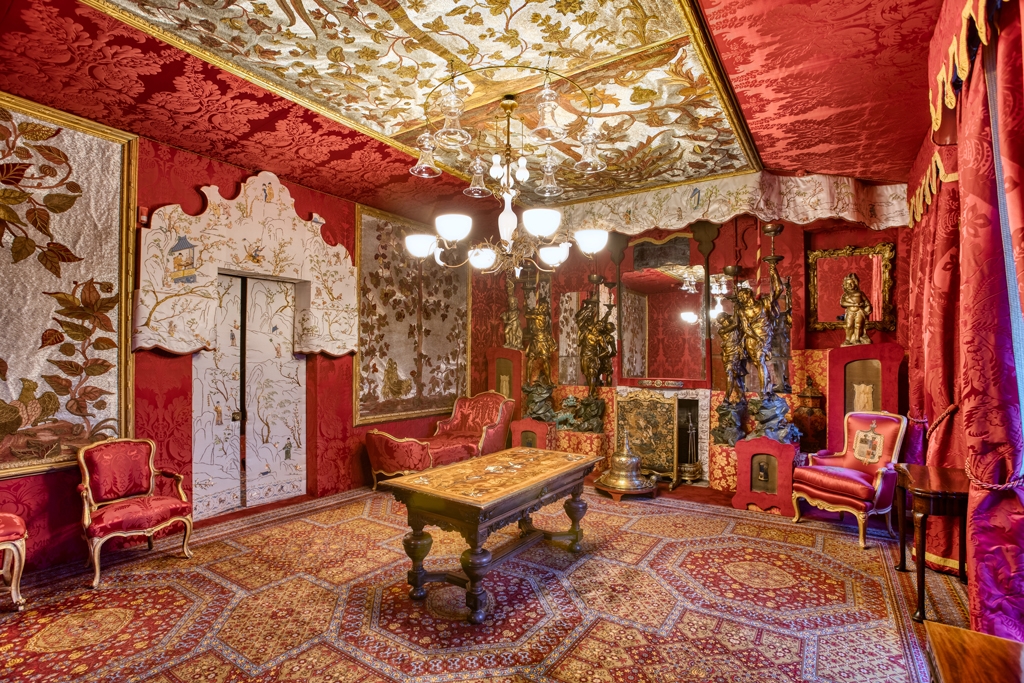
The ‘red room’ in Hauteville House, where Hugo threw parties and hosted other social events
Indeed, many words and symbols are engraved throughout the house, including statements of his political beliefs, such as ‘La fin du seigneur’, ‘La fin du soldat’ and ‘La fin de prestre’ that are inscribed on three 17th-century Flemish-inspired painted panels in the dining room, which, translated, mean ‘The end of the lord’, ‘The end of the soldier’ and ‘The end of the priest’.
Allegory is intrinsic to the aesthetics of the house even in its structure: as you climb the stairs you move from literal darkness into light, a visceral metaphor and one that resonated deeply with Hugo who always wrote from the glass look-out at the brightest, highest and therefore most enlightened spot in the house. This small windowed room alone is full of intrigue: See his modest, black, fold-down desk where he finished Les Misérables and wrote Les Travailleurs de la Mer standing up, and the carpeted shelves he had built so he could lay out freshly inked manuscript pages to dry. The coast of France is just visible on a fine day – his reason for writing always present and pressing on his mind.
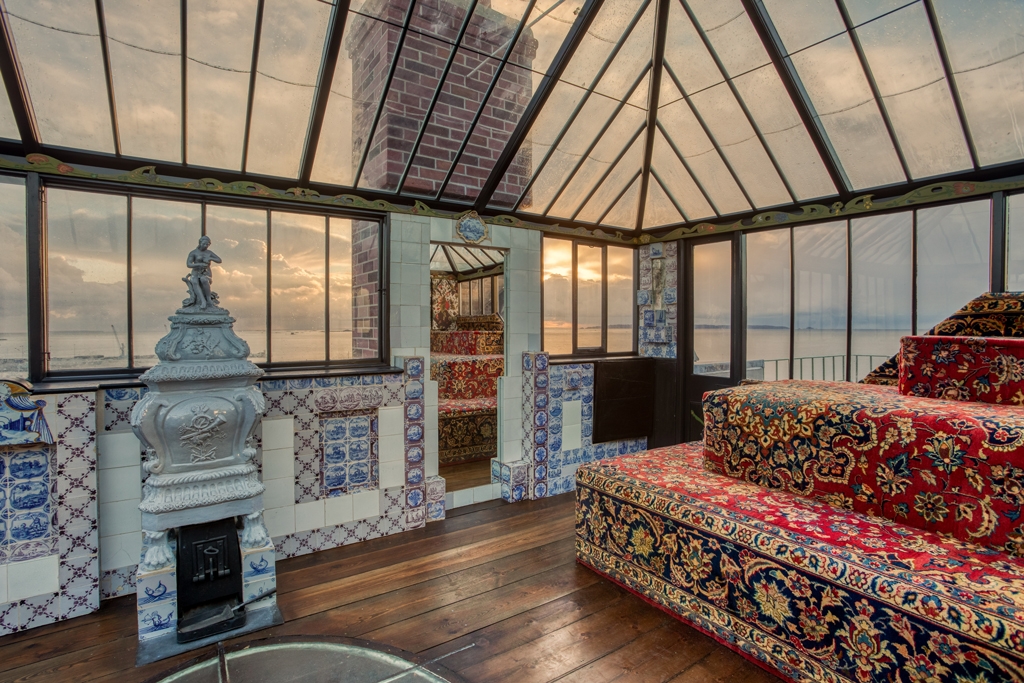
The ‘Look-out’ at Hauteville House
What to Buy in Guernsey
Another draw to the Bella Luce is its gin distillery. Run by the hotel’s proprietors, the Wheadon family, who have been producing alcohol on the island for over a hundred years, the handcrafted gins are true products of the island that they are made on. Rock samphire foraged from the nearby cliffs and mandarin limes grown in a local glasshouse are just two of the carefully sourced botanicals spiking the artisan spirits. You can buy a bottle at the hotel or last-minute from duty free as you fly home. You may find the prices easy to swallow too – Guernsey don’t add VAT.
For a Guernsey jumper, get the real deal from Guernsey Woollens in The Guernsey Shop at St Peter Port. They’re tightly twisted 100 per cent British wool sweaters made to last (and keep you very warm). Or visit Le Tricoteur on the west coast to watch them being made before buying your own.
Pop a couple of blocks of proper Guernsey butter and cheese in your suitcase if you can squeeze them in. And the fudge is the richest we’ve ever tasted – worth the journey alone. Nelio’s Deli near the tourist information centre in St Peter Port has all the local delicacies in stock for your browsing pleasure.
What to Do in Guernsey
Go on a Renoir-themed walk. Not only will you see some of the most scenic, secluded beaches in Guernsey – the very same that hypnotised the world-famous artist during his extended five week long holiday there – you will learn how the island inspired him to introduce nude figures into his works. Tres risqué. Korinne Le Page should be your accredited tour guide of choice, especially as her family owns the land and the famous cottage depicted in Renoir’s Moulin Huet Bay, where Hugo also picnicked regularly with his family.
If you need help choosing your Guernsey-distilled gin, book a tasting at the Bella Luce. It’s an eye-watering 46 per cent ABV so book a taxi.
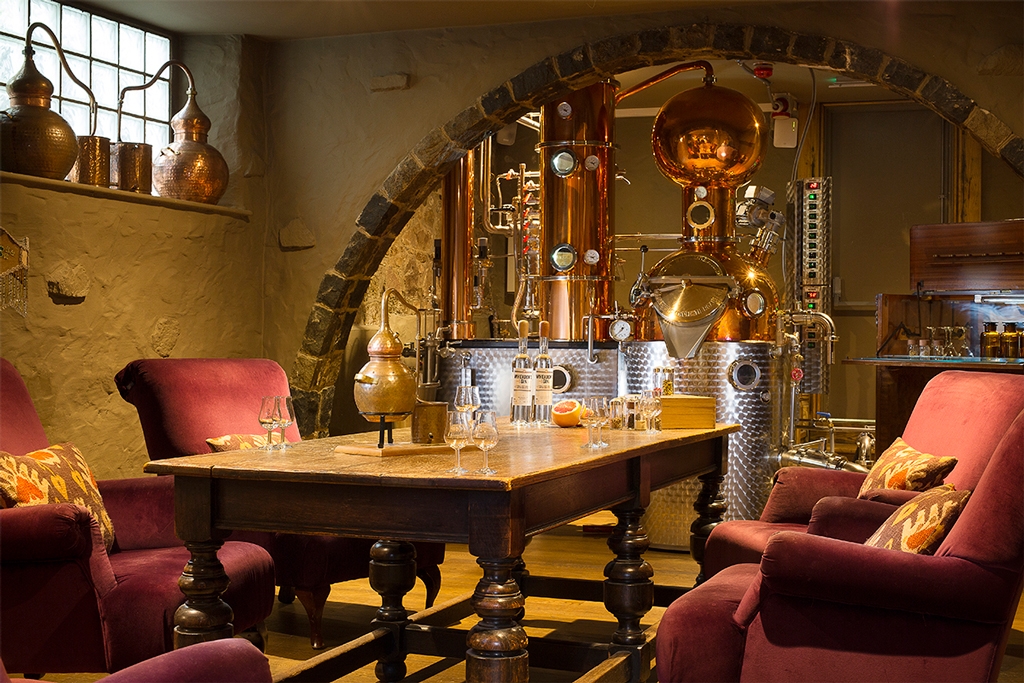
The microdistillery at Bella Luce © Matt Gillespie
If the weather is nice and Hauteville House whet your appetite, Gill Girard, gold accredited Guernsey guide, will show you around the sights in the capital where Hugo lived, alongside his family and mistress, Juliette. Gill knows everything, even what Hugo had for breakfast (cold coffee mixed with a raw egg – that’s the kind of person who you just have to learn more about.)
How to Get to Guernsey
With five to six flights from London Gatwick to Guernsey every day with Aurigny, and a flight time of just over an hour, you can comfortably leave Gatwick on Friday evening (6pm or 7.40pm) and arrive at your hotel in time for dinner.
